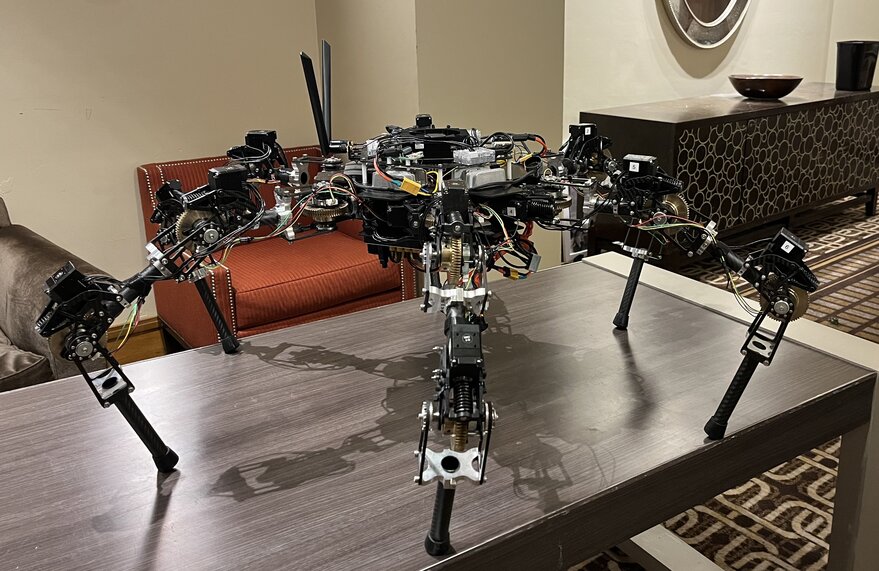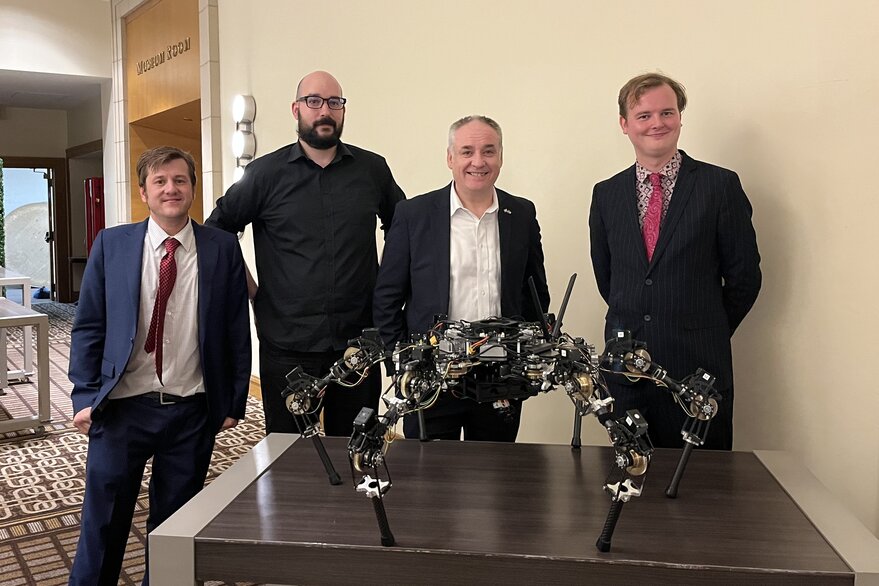LOS ANGELES – In spite of its name, the Asteroid Mining Corp. is not banking on the space resources market materializing anytime soon.
“We are a robotics company with asteroid-mining aspirations,” Mitch Hunter-Scullion, Asteroid Mining Corp. CEO and founder, said Oct. 11 at the Space Economy Summit here. “Space resources is a very exciting industry. But it’s one which, let’s be honest, isn’t currently existing fully into its mature sense.”
In the near term, the London-based startup will offer services with an six-legged, 20-kilogram robot called Space Capable Asteroid Robotic-Explorer. SCAR-E, unveiled onstage at the Summit, lifted legs individually to perform what Hunter-Scullion, a Scottish techno-futurist, called “a wee dance.”
“We are coming for you Boston Dynamics,” Hunter-Scullion said. “You have four legs. We have six. Our go-to-market strategy is to go to the industrial inspection market and go to places which four legged robots cannot.”
SCAR-E’s Future
Once six-finger grippers are attached to its feet, SCAR-E will be able to scale walls and inspect ship hulls among other tasks. For future applications like lunar crater exploration and asteroid prospecting, SCAR-E’s mechanical and electronic components will be tightly encased to keep out regolith.
Wheeled rovers have proven useful on the moon or Mars. But they may have trouble with steep slopes.
“If you wanted to go into the Shackleton crater on the moon, you’re not going to be to get there with wheels,” Hunter-Scullion said.

The privately funded Asteroid Mining Corp., established in 2016, calls itself the UK’s first space mining company. In addition to its London headquarters, Asteroid Mining Corp. has a research laboratory in Sendai, Japan, and a U.S. division in Atlanta.
While offering SCAR-E for commercial industrial applications, Asteroid Mining Corp. will develop Alchemist-1, a materials-processing satellite.
“We are looking for International Space Station and lunar applications for this very robot in about 2026, 2027,” Hunter-Scullion said. “Beyond that, we’d be looking to validate target selection for an expedition-class mission. Then, towards the end of this decade, if not the early 2030s, we’d be looking to send this very robot or its son up to the asteroids in order to start exploring the resources so the humanity can take advantage of our celestial backyard.”
